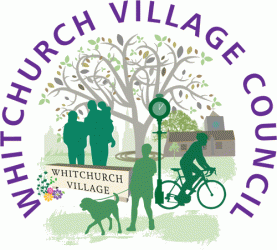The Village of Whitchurch lies adjoining the southern boundary of the City of Bristol but is not part of that city for administrative purposes. The village is a separate civil parish with its own parish council within the district of the Bath and North East Somerset. The term “Whitchurch” is also used to describe the adjacent parts of the City of Bristol not within the civil parish. The village lies astride the A.37 road which was formerly the toll road leading from Bristol to Wells to the south. It lies four miles from the centre of Bristol where there is a link to the motorway network and twelve miles from the world heritage city of Bath. The village has been enlarged during the last 20 years by new housing and now has a population of some 1200 but its expansion has up to now been restricted by the surrounding green belt.
Historically there have been human settlements in the area since ancient times. There is evidence of an iron age settlement locally and of the existence of a roman villa and mint at Lyons Court Farm within the present village. The original Saxon village which was known it seems as Filton (or perhaps Fylwood or Felton) lay somewhat to the west of the present village but the centre of population appears to have moved to the site of the present village in about the 12th century. It is at about that time that the building of the present church was started (the tower dates from that time). The church stands on the site of a cell or chapel of St. White, an ancient British saint and was originally known as St. Whites Church, which in all probability explains the name of the village. The church was later expanded achieving its present form in the 15th century building. Today the church holds only about 100 people but because it is an extremely attractive building in a beautiful setting it is very popular as a venue for weddings. Originally the village formed part of the lands belonging to the abbey that formerly existed in the nearby town of Keynsham. It was a community whose inhabitants mostly worked in agriculture.
The village has several local names that reflect on life in past ages. There is Sleep Lane where it is said that the tramps from Bristol used to spend the night, a Washing Pound Lane by the Saltwell stream and also a completed unsubstantiated story that there was or is an underground tunnel leading from the church to the local hostelry. In fact there were until the last century two adjoining local inns known as the Black Lion and the White Hart. These were replaced in the 20th century by one modern public house now named the Maesknoll after the prominent iron age earth work to be found on the hill overlooking the village.
Though the village is not large it is not without amenities. In addition to the Anglican Church there is a United Reform Church originally founded in 1830, a primary school (which when it was established replaced a national school founded in 1837), a community centre that houses various clubs and activities and a flourishing branch of the Royal British Legion. Within the village there is also situated the charity called Friends of Bristol Horses Society with its associated tourist attraction Horse World.
Acknowledgement – In so far as historical matters are concerned reference has been made to Studies on the history of Whitchurch published by the Whitchurch Local History Society.
